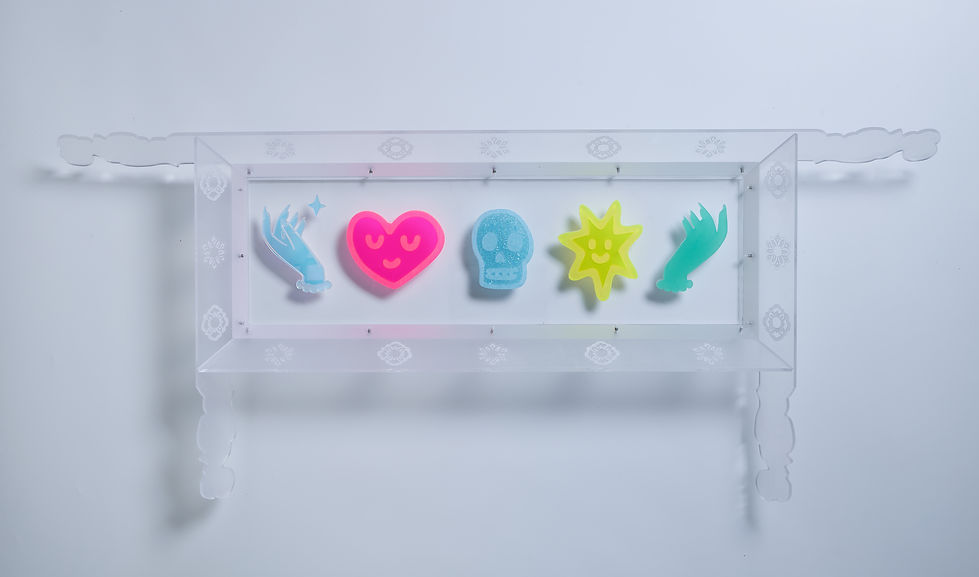Transition
Historical records like the Annals of the Joseon Dynasty indicate that the names of palace buildings, pavilions, and gates were written on plaques known as 'pyeon-aek.' Longer inscriptions, including poems and detailed narratives, were called 'hyeonpan.'
Today, 'hyeonpan' primarily refers to wooden signboards hung above the doors of buildings. Although 'pyeon-aek' would be the correct term according to the original usage, over time, 'hyeonpan' has evolved to encompass 'pyeon-aek,' 'julyun,' and similar items.
This evolution reflects a broader truth: we live in a world where meanings and concepts constantly change. The meanings of yesterday might differ today. Yet, as conceptual artist Lawrence Weiner noted, "The meaning of things often changes, but the things themselves don’t." In this series of work, I aim to portray the embrace of change instead of focusing rigidly on the meaning of things that have evolved.
『조선왕조실록, 의궤 등 사료를 보면 궁궐의 전각, 누각, 문 이름을 쓴 것을 편액으로 칭했고, 시문을 비롯하여 여러 전말을 길게 서술하는 경우에 현판이라 칭했습니다. (국립고궁박물관, 조선왕실의 현판 (2020), 008 발췌)
현대에 이르러 현판은 주로 건물의 이름을 문 위에 거는 목재 판자를 지칭하게 되었습니다. 원래의 의미대로라면 현판이 아니라 편액으로 불러야 하지만, 시간이 흐름에 따라 그 의미가 변화되었고 이제 현판이라는 용어는 편액, 주련 등을 모두 포함하는 포괄적인 개념이 되었습니다.
이렇듯 우리는 어제의 의미가 오늘은 다를 수도 있는, 끊임없이 달라지는 세상 속에서 살아가고 있습니다. 이러한 변화 속에서 의미에 중점을 두기보다는, 개념 미술가 로렌스 와이너가 “어떤 것들의 의미는 변할 수 있어도, 그것들 자체는 변하지 않는다”고 한 것처럼, 변화 자체를 그대로 받아들이고 그 틈에서 살아가는 저의 시각을 각각의 작업에 담아내고자 합니다.

Diging! (2024)
Acrylics, resin, glitter and m4 screws
23.5” x 18”

Dreamy (2024)
Acrylics, m4 screws
40” x 17” x 3"